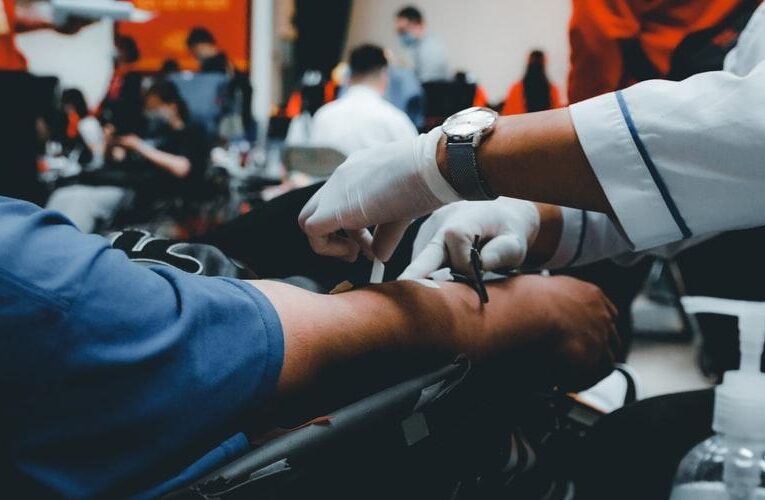At the end of the Second World War, the British government began a global reform of social security according to the developed program with the impressive name “Cradlé to grave” – “From diaper to grave”.
One of the results of this project was the creation of a public medical care system called the National Health Service, or NHS. Since then, this abbreviation has gained worldwide fame and is considered synonymous with the highest quality in the provision of medical services in most English-speaking countries. The half-century history of the NHS is better than any other argument, confirming the stable effectiveness of this government structure, and yet many experts in public health predict the emergence of serious financial and organizational problems in the British health system before 2010.
History of occurrence
The idea of socialization of health care was that Great Britain, which during the war years was able to realize almost full employment of the population and spend huge amounts of money on the army, in peacetime could well direct such social solidarity and financial resources to the well-being of citizens. However, after the development of the legal grounds for reforming the medical care system, the United Kingdom’s Ministry of Health faced an unexpected problem – not only did the doctors not support the innovations, but they also offered organized resistance. Aneurin Bevan, who was then Minister of Health, had a difficult task to perform – to lure medical personnel to their side, because without the support of medical institutions, the plan would be doomed.
According to historians, Mr. Bevan was a cunning politician and managed to split the political opposition and get the support of leading medical luminaries, promising all scientific consultants an impressive financial reward. Money and power did their part, and already on July 5, 1948 the founder of modern British medicine officially proclaimed the introduction of the National Health Service with the following words: “Now we have become an ideological example for the whole world.
Until then, millions of citizens of the United Kingdom could not afford the services of mostly private hospitals and actually had no medical support. Today, every Briton has access to high quality healthcare services that are funded through progressive taxation, that is, everyone pays according to their abilities and as a patient receives services accordingly. Interestingly, even now the British Labour Party still considers the establishment of the NHS to be its most outstanding achievement.
Thus, the British NHS has become the first government organization in the world to provide universal free health care services. In today’s environment, the work of the time-tested system still remains successful, but its stability is a cause for concern for many analysts. Globalization and increasing cost of medicine has led to serious structural problems, primarily the need to wait even for some urgent interventions. In European scientific periodicals, there are increasing reports of declining treatment standards in some hospitals in the United Kingdom. In addition, many high-income Britons prefer public private insurance, and an increasing number of employers are providing commercial insurance to employees.
The structure of the medical service
However, existing shortcomings are more than compensated for by the internationally recognized high quality of assistance and absolute accessibility to the entire population, which is ensured by the dynamic response of British law to changes in society. The well-thought-out structure of the United Kingdom’s health care system, with the Health Department at its heart, plays an important role in this process. It is this government body that creates and centrally oversees the implementation of laws and regulations in the medical industry, and the main decisions at the local level are made by local NHS units. There is also a third type of government body, which serves as a link between the two levels of health organization mentioned above – Strategic Health Authorities. Today, for example, there are 28 such structures, which are responsible for certain regions and ensure integration of national priority developments, such as early cancer detection programs, into local health care plans.
The United Kingdom has adopted a division of primary and secondary health care services to distribute a wide variety of services. Both groups of services are provided by their respective local NHS units, the so-called NHS trusts, which report directly to the regional strategic health departments.
Primary health care provides routine medical care in general practitioners’ offices, outpatient surgery departments, dental and ophthalmology rooms. Specialized medical services in hospitals, outpatient clinics, as well as the work of psychologists and psychiatrists are considered secondary.
Depending on the field of activity, all health care systems are divided into several groups, the main of which are primary care and public health organizations. At the end of 2006, the number of these organizations was reduced from 303 to 152, which according to the government’s plan is to improve management efficiency and reduce costs. Primary care trusts are responsible for 29 thousand general practitioners and 18 thousand public dentists; they finance clinics under the jurisdiction of other trusts; provide emergency care to patients referred from other government agencies and private sector; directly organize primary and secondary prevention activities, as well as monitor the local epidemiologist. These local organizations together form the core of the NHS and spend 80% of the total health care budget. It is also noteworthy that the Department of Health provides primary healthcare institutions with the right to use outsource tactics, i.e. to use the services of private healthcare institutions to better allocate resources. This approach is very effective in cases where the required intervention is an emergency, and in all available public health clinics there is limited capacity to implement it for one reason or another. Some of the medical centers that perform routine outpatient surgery and diagnostic procedures in industries where waiting lists are very large, such as ophthalmology, are also privately owned.
Most other organizations that are not part of the primary health care system are usually referred to as NHS without specifying specific functions, although for the purposes of this publication this is necessary to further set out the principles of UK health care.
The NHS manages most hospitals and is responsible for specialized medical care, particularly mental health care. The role of these organizations is to ensure high quality of services and rational use of budget funds. If it is necessary to reduce waiting lists, it is also provided to appeal to private structures. trusts NHS are employers of most of the personnel of the health care system, from doctors to security service.
- Emergency hospitals (astste trusts) ensure the functioning of institutions providing short term medical care; this group includes emergency hospitals, maternity hospitals, X-ray diagnostic laboratories.
- Assets (saga trusts) work simultaneously in the health and social sectors, which is necessary when implementing programs that involve close cooperation between the NHS and the municipal government.
- Mental health trusts organize and monitor psychological treatment, medical support and training for patients with serious mental health problems.
- Ambulance trusts. In England, for example, there are more than 30 ambulance stations, and each of them is managed by a separate trust, responsible for transporting patients to the proper medical facility.
It is noteworthy that the trusts, leading in the national ranking of efficiency, have the opportunity to get out of control of the NHS and become an independent organization. This, in turn, means autonomy for all member hospitals of this trust. Although hospitals that have been granted this right officially remain part of the NHS, and patients continue to receive treatment free of charge, independent trusts have greater freedom in managing resources with minimal government control. Legally, the clinics belong to the local community, that is, all residents – staff and patients at the same time. This type of ownership allows local health care options to be shaped according to needs and priorities that are not always aligned with national strategies. Obviously, it is much easier for the municipal government to solve such problems as, say, queues for a specialist consultation on endemic disease.
Individuals also have greater access to investment funds from both the public and private sectors. On the other hand, since the NHS no longer controls the system so closely, there is a need to establish a monitoring committee, which usually consists of local government representatives whose work is already controlled by an independent institution.
Private medicine
As the world practice shows, no matter how perfect the state network of treatment and preventive care institutions is, there will still be a demand for medical services provided by commercial entities. The reasons for this may be a higher level of service, the possibility to see a doctor without having to wait in line.
Private health care sector in the UK is much smaller than the NHS and does not have such a variety of facilities. On the other hand, all available private medical services are a mirror image of public outpatient clinics, clinics, specialists’ offices, but without necessarily complying with national clinical guidelines and strategic plans of the Department of Health. Therefore, commercial entities are not responsible for the health of the local population. In addition to all the above mentioned non-state forms of medical care to the population, private practices of general practitioners working in parallel with the NHS are quite widespread. Non-governmental medical insurance is becoming increasingly popular in the United Kingdom, and many types of policies have been developed for all population groups. Many employers introduce commercial insurances as part of a social package or offer them as part of their salaries.
Secondary health care in the private sector, which involves staying in specialized departments, providing psychiatric care and elderly care, is very popular among patients. Even with their GP at the NHS, the British often turn to commercial services for the following services:
- certain diagnostic manipulations;
- additional advice from another specialist;
- certain types of surgical procedures;
- medical manipulations not directly related to treatment, cosmetic surgery;
- addiction treatment or rehabilitation.
There are over 300 private hospitals in the United Kingdom. Most of them are organized by business structures, but the NHS also provides patients with treatment in private wards of public hospitals. All private clinics must be licensed by the local branch of the national health system and undergo at least two reviews per year. Thus, commercial hospitals are certified and inspected by local authorities, in contrast to NHS hospitals, where national inspectors monitor them.
Normalization and monitoring in health care
Several organizations are involved in ensuring the high quality of medical services provided to the population. Nevertheless, all these special health care structures mainly focus their work on the most important aspects of the industry – clinical recommendations made separately for all types of pathological conditions and patient safety.
In England and Wales, the National Institute for Clinical Excellence-NICE develops and publishes clinical guidelines. These documents address specific diseases, medicines, medical devices, and technologies for managing and treating certain pathological conditions. All NHS hospitals must take the recommendations into account and base their internal algorithms on them. As mentioned above, private clinics are not required to follow such guidelines, but many commercial institutions nevertheless endorse them as internal “best practice” standards. It is unlikely that an argument can be found that would characterize more accurately the professionalism of NICE staff. In addition to creating clinical guidelines, NICE also educates the public and advises health professionals.
The Health Commission oversees the proper implementation of all necessary recommendations in practice. It is the Commission that evaluates and publishes NHS performance indicators. According to the ratings created, the ability to function autonomously, i.e. to acquire independent status, is analyzed. Despite the obvious difficulty of conducting such an assessment, the initial result is striking in its accessibility. In England, all NHS organizations in the official rating list are rated on a scale from zero to three stars, depending on the following indicators:
- waiting times and waiting lists;
- number of cancelled interventions;
- hospital cleanliness;
- lethality;
- financial situation;
- number of repeated calls to the ambulance service.
Collection and rational use of information on the undesirable consequences of treatment can improve safety standards in NHS facilities. These functions are performed by the National Patient Safety Agency, which distributes information to the staff on the need to report on unwanted effects of treatment and other dangerous events for patients. Patients’ complaints are also handled by a separate service, which evaluates staff actions not only in public but also in private institutions. It should be noted that such work is carried out independently of the NHS and the government. In the case where a serious professional misconduct by a doctor is proven, his case is referred to the General Medical Council, which has the authority to impose the necessary sanctions on the staff of private and public hospitals.
Medical Personnel
What distinguishes NHS from other public health systems is that the NHS not only directly covers the cost of health services, but also hires a huge number of doctors and nurses who provide these services. Almost all senior and nursing staff working at the clinic are NHS employees. On the other hand, general practitioners, dentists and ophthalmologists have their own offices or offices and fulfill government orders. All these specialists have the right to work separately or together, to be the owners of surgical or therapeutic clinics, and to hire staff, including other doctors. However, the NHS sometimes still has to centrally provide medical staff to certain regions if there are not enough individual practitioners.
According to many reputable sources, the total number of NHS employees is more than one million, which gives the organization a place in the top five largest employers in the world, together with the U.S. Department of Defense, the Chinese Army, and the Indian Railway. However, this number of employees is also achieved due to the fact that the NHS includes many social services in the UK.
As for wages, then, according to the Air Force, in 2005-2006, the average salary of a general practitioner was about 100 thousand pounds a year – a sum that, when converted into hryvnia comes close to six zeroes. Such income does not leave indifferent doctors from many European countries and practically excludes personnel shortage even in the most remote or sparsely populated geographic regions.
Financing and payment system
The main role in the direct allocation of NHS financial resources is played by the primary level trusts already described, which are responsible for paying for the services of general practitioners and relevant hospital departments. The funds at the local level are allocated according to the contract, established tariffs or national recommendations. In turn, the primary trusts manage the budget provided by the health department according to population size and local characteristics. It is very important for trusts to demonstrate balanced budget management at the end of the reporting year. In other words, there must be enough money and the lack of resources is unacceptable, although in recent years the increasing demand for more expensive medical services has made it impossible to achieve an ideal financial balance. Despite increasingly difficult working conditions, failure to meet government plans for the board of directors in most cases means dismissal.
With regard to the cost of health care services for the public, it should be noted that with the exception of fixed rates for prescriptions, dental and ophthalmic manipulations, NHS operates free of charge for all permanent residents of the United Kingdom. It does not matter if the patient has paid contributions to the national insurance system. All those who are not permanent residents of the United Kingdom must pay for medical services, except those provided by the ambulance and reception departments.
Since April 2007, the cost of a prescription, regardless of the type of medicine is 6.85 pounds sterling; patients over 60 and under 16 years of age, patients with certain diseases and low income are exempt from payment. If there is a need to re-write prescriptions for the same drug, patients can purchase a so-called pre-payment certificate that allows doctors to write several prescriptions free of charge. The cost of prescriptions, as mentioned above, remains fixed at any market value, but prescriptions for medical equipment and supplies cost more to the British.
On the other hand, the rise in price of some drugs, especially those used to treat cancer, makes prescriptions too expensive for primary care, whose limited budgets should cover the difference between market price and prescription cost. This situation has repeatedly led to discussions about the need to include such drugs on the prescription list.
Recently, the number of NHS dental offices has been decreasing for various reasons, which has led to the expansion of the private sector that fills the gap. Since April 2007, the cost of British dentists working for the government has been standardized at £15.90 per examination; £43.60 for cavity filling; and £194 for more complex manipulations such as crowns, bridges or prostheses. Many dentists work for both commercial institutions and the NHS, but according to the government, their income from both sources is approximately equal.
The above facts do not reveal many details of the UK healthcare system. In particular, the differences between the approaches that dominate England, Scotland, Wales and Northern Ireland have been barely considered. Such an analysis goes well beyond the scope of this publication and obliges the author to gain a deeper knowledge of the country with which he is bound only by understanding the language. On the other hand, the globalization of information flows and the constant surprise of us with the capabilities of the Internet allow readers to easily find the information they need on their own. This review is only an attempt to summarize the basic principles of the NHS, a complex mechanism that has worked for many years for the benefit of millions of people, but seems to be getting outdated. Criticisms from the press and scientific publications about the cost, politicization and conservatism of the British health care system are evidence of this. Whether NHS advocates or critics are right, time will tell, but for now United Kingdom medicine continues to save lives, generate scientific discoveries and attract doctors from across the European Union.




























